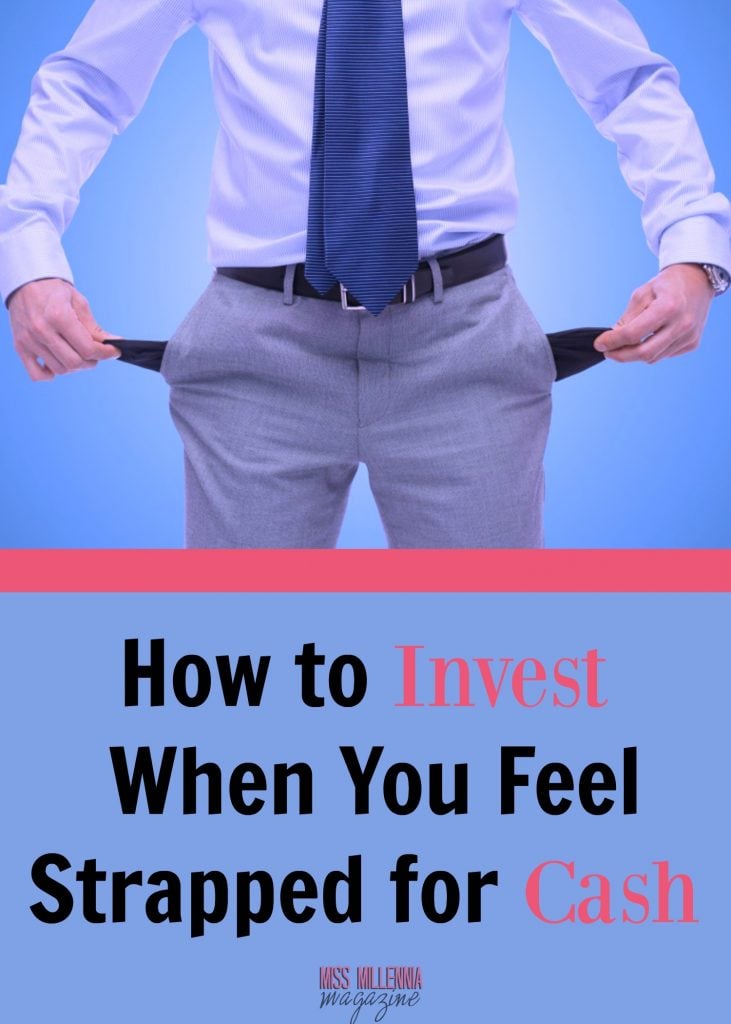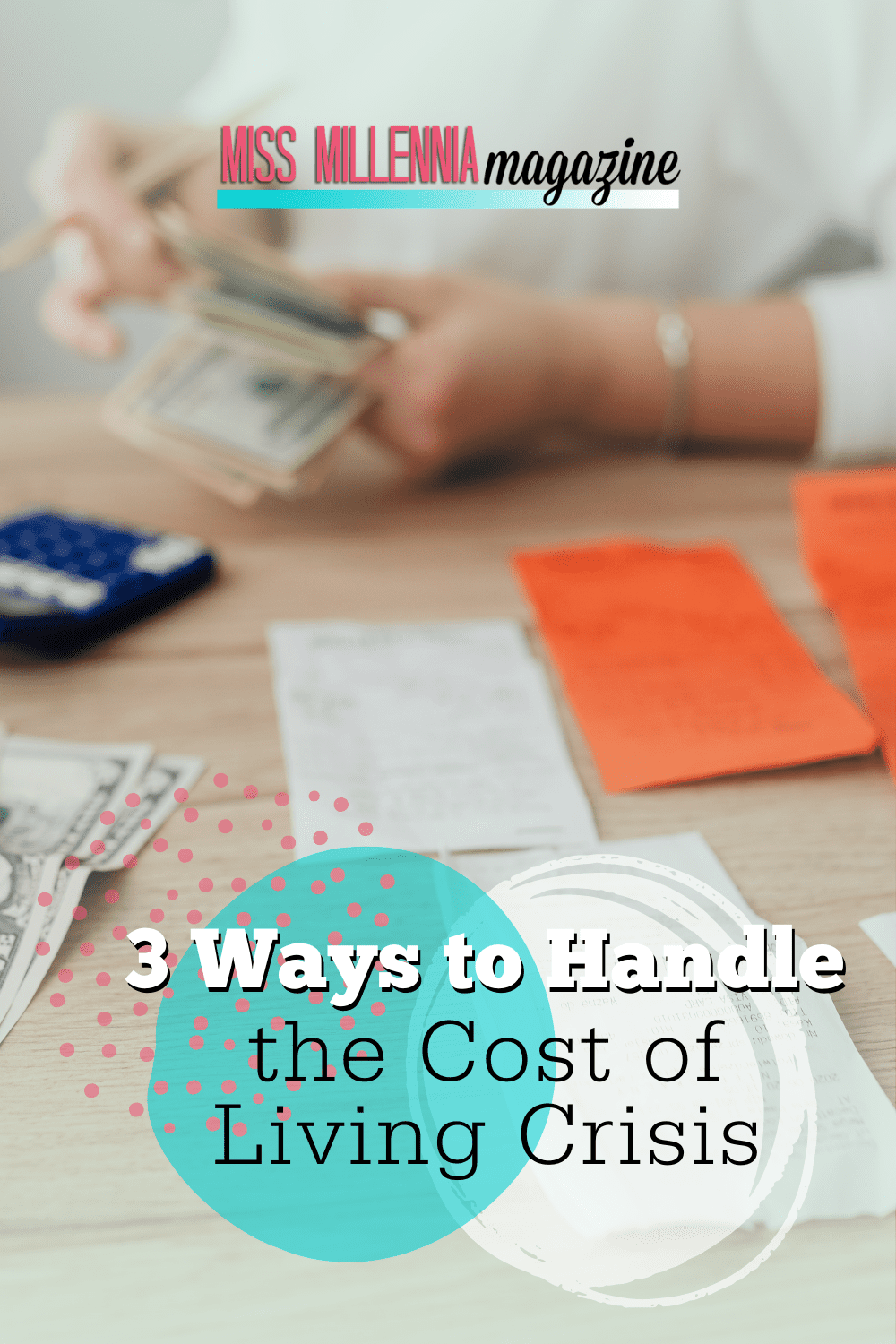How To Invest When You Feel Strapped For Cash
Millennials are throwing financial companies for a loop when it comes to investing. Recent reports show that millennials have a general mistrust of the stock market and hold over 40 percent of their assets in cash.
Entering the market during a downturn also affected their ability to find decent employment (if any employment at all) and wages are stagnant. In a recent AllState/National Journal Heartland Monitor Poll, both younger and older respondents cited that people now need a salary of at least $50,000 a year when they are starting out in order to meet financial obligations.
In other words, because of loans and economic conditions, millennials are probably feeling strapped for cash. It should be of no surprise then that the same poll also found that millennials cited paying down their debts as the best way to use any extra money.
The good news is there are ways to invest even when you feel like things may be tight. Some of it requires shifting your mentality while other parts just require knowing about tools that are now available to young investors.
Why You Need to Prioritize Investing
There is a never-ending debate in the personal finance community as to whether you should pay off debt, save or invest. The reality is you should be doing all three simultaneously.
While it’s imperative that you pay off your debts and have some liquid savings, you also need to make sure you’re investing for the future. Having extra money sitting in the bank or having it go toward your debt won’t help you beat inflation down the road. The only way to beat it is to take advantage of the returns, dividends and compounding you get with investing.
You Don’t Need A Lot of Money to Invest
There is a common misconception that you need to have a nice chunk of change handy in order to start investing. Perhaps this was true decades ago, but technology has made it easier than ever to invest small amounts of money over time.
I’ll get into specific examples later on in this post, but first it’s important to see just how little money you actually need in order to reap the rewards of investing.
Dave Ramsey broke it down on his podcast. Let’s say you start investing at age 25 and put away $100 a month into a mutual fund with an average 12% return until the retirement age of 65. By the time you retire you would have $1,176,000.
Granted, this is controversial advice. The truth is you’d still have to educate yourself on where to actually put your money in order to get a good return and 12% is on the very high side of things. Additionally, you still have to account for fees and taxes.
I also personally don’t like all the yelling and screaming that has become synonymous with Dave Ramsey. However, the point Dave Ramsey claims he’s trying to make is correct: you don’t need that much money to enjoy some of the benefits of investing. One hundred dollars a month could look like cutting a cable bill, cutting unnecessary spending or starting a side business.
Now, some people may say they can’t even scrape up $100. No problem. There are still plenty of options to invest whatever money you can. Here are some of the ways you can invest even if you have little money.
Betterment
Betterment is a newer financial company that prides itself in helping young investors get started. It has low costs and offers investors some of the services that were traditionally only reserved for people who could afford financial advisors.
Perhaps one of my favorite things about Betterment is they allow you to invest whatever you have. In other words, if all you can afford to invest this month is $20, Betterment allows you to put that $20 into your account.
This was something I couldn’t do with my previous financial institutions, and it’s one of the primary reasons I moved nearly all of my investments over to Betterment. Now instead of just having some extra money sitting in a bank account collecting measly interest or sitting in a money market fund, I can just invest it.
Acorns
Acorns literally allows you to invest your spare change.
Acorns is a service that takes small deposits from your checking account and invests the money into ETFs based on your investment profile.
Every time you make a purchase from your checking account, Acorns rounds up to the next dollar and puts the difference into your investment account. Once you reach $5, the money is invested into an ETF.
Dollar Cost Averaging
Dollar Cost Averaging is an investing technique that allows you to invest a fixed amount of money into investments of your choosing over time.
When the cost of the investment is high, you buy less shares based on the fixed amount. On the flip side, when the cost of the investment is low you buy more shares.
This has a couple of advantages:
- You can ease your way into the market with small fixed amounts. For instance, I started doing this with $50.
- It makes it cheaper to invest because it brings down the average cost per share.
Investopedia has a great video that breaks it down with numbers so you can clearly see how even small fixed amounts can be used to invest in the market.
Final Thoughts
Contrary to popular belief, you don’t need a whole lot of money to start investing and benefitting from it. Thanks to technology there are now several options for young investors to get started with whatever money they have.
Read the original article on Invibed, Copyright 2015. Invibed is an online destination that makes personal finance relevant, accessible and entertaining to millennials. Follow Invibed on Facebook and Instagram.







